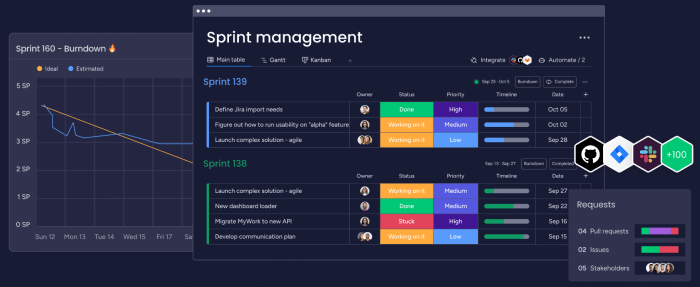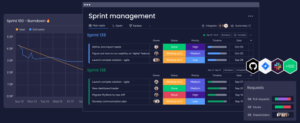
In today’s fast-paced business environment, understanding the dynamics of workforce planning tools is more crucial than ever. These tools not only streamline operations but also enhance employee engagement and customer satisfaction, making them a vital component of modern organizational strategy.
From sophisticated software solutions to user-friendly applications, workforce planning tools come in various forms designed to meet the diverse needs of businesses. They offer functionalities that enable companies to optimize their human resources, forecast staffing needs, and align workforce capabilities with organizational goals.
Overview of Workforce Planning Tools
Workforce planning is a crucial process that involves forecasting an organization’s future human resource needs and ensuring that the right people are in the right positions at the right time. This strategic planning is significant for organizational success as it helps to align workforce capabilities with business goals. In recent years, various workforce planning tools have emerged in the market, each designed to facilitate this process effectively.These tools can range from simple spreadsheet applications to sophisticated software that integrates with other business systems.
Common types of workforce planning tools include Human Resource Management Systems (HRMS), workforce analytics platforms, and project management tools. Each of these tools offers distinct features and functionalities, such as data analysis, scenario planning, and employee tracking.
Benefits of Utilizing Workforce Planning Tools
Implementing workforce planning tools offers a multitude of advantages for businesses, transforming the way organizations manage their human resources. These tools can significantly improve operational efficiency by making workforce management more systematic and informed. For instance, they can help identify skill gaps, optimize labor costs, and enhance overall productivity.Moreover, by utilizing these tools, organizations can foster greater employee satisfaction. For example, workforce planning tools can facilitate better scheduling, leading to improved work-life balance for employees.
Case studies from companies such as XYZ Corp and ABC Ltd demonstrate how adopting these tools has led to reductions in turnover rates and enhanced team morale.
Key Features to Look for in Workforce Planning Tools
When selecting workforce planning tools, organizations should consider several essential features that contribute to the effectiveness of these systems. Key features typically include:
- Data analytics capabilities for informed decision-making
- Scalability to accommodate organizational growth
- User-friendly interfaces for ease of use
- Integration with existing HR and project management systems
A comparison of top workforce planning tools available today reveals varying functionalities. For instance, Tool A may excel in data visualization, while Tool B might offer superior integration features. Organizations should assess their specific needs to select the most suitable tool.
Customer Service Implications of Workforce Planning
Workforce planning tools have a direct impact on customer service delivery by ensuring that the right skills are available when needed. Effective planning allows businesses to match employee capabilities with customer demands, leading to improved service quality. Best practices for aligning workforce planning with customer service objectives include regularly reviewing customer feedback and adjusting workforce strategies accordingly. Companies like DEF Inc.
have reported significant improvements in customer satisfaction metrics after implementing robust workforce planning systems.
Impact of Entrepreneurialism on Workforce Planning
An entrepreneurial mindset significantly influences workforce planning strategies. Entrepreneurs often prioritize agility and innovation, which can lead to creative approaches in workforce management. For example, startups may leverage technology to implement flexible workforce solutions tailored to their unique needs.Innovations driven by entrepreneurial ventures often reshape traditional workforce planning methods. The dynamic relationship between workforce planning and business growth in startups is evident, as effective planning enables these organizations to scale efficiently in response to market demands.
Business Ethics in Workforce Planning

Ethical considerations play a vital role in workforce planning. Organizations must ensure that their planning processes are transparent and equitable to foster a positive company culture and build trust among employees. This includes fair representation in workforce analytics and unbiased decision-making.Potential ethical dilemmas may arise when organizations prioritize efficiency over employee welfare. It’s crucial for companies to balance operational needs with ethical standards to navigate these challenges effectively.
Business Franchising and Workforce Planning
In franchise operations, workforce planning tools are essential for maintaining consistency and quality across multiple locations. Effective strategies include standardized training programs and centralized communication channels to ensure that franchisees adhere to company standards.Custom workforce planning solutions tailored for franchising can help address the unique challenges faced by these businesses. For instance, franchises can utilize workforce planning tools to manage staffing levels during peak seasons, enhancing operational efficiency.
Furnishings and Supplies in Workforce Planning
Effective workforce planning requires the right furnishings and supplies to optimize space and resource allocation. This includes ergonomic furniture to improve employee comfort and productivity, as well as technology tools that facilitate efficient workflow management.Recommendations for selecting the right supplies include assessing the specific needs of the workforce and considering the latest advancements in technology that can enhance workplace efficiency.
Human Resources Role in Workforce Planning
HR professionals play a pivotal role in workforce planning initiatives, leveraging data-driven insights to enhance talent management and development. By using workforce planning tools, HR can align workforce strategies with organizational goals, ensuring a cohesive approach to human resource management.Methods for aligning workforce planning with organizational HR strategies include conducting regular workforce assessments and fostering collaboration between departments to anticipate future workforce needs.
Industrial Mechanical Considerations in Workforce Planning
In the industrial mechanical sectors, workforce planning tools can enhance productivity by streamlining processes and optimizing labor allocation. Specialized workforce planning needs often arise in manufacturing and engineering due to the technical skillsets required.Organizations must analyze the relationship between workforce skillsets and advancements in the mechanical industry to ensure they remain competitive. Effective workforce planning can lead to better alignment between employee capabilities and industry demands, driving innovation and growth.
Last Word
Ultimately, embracing workforce planning tools can transform how organizations manage their human capital, paving the way for improved efficiency and strategic growth. As we continue to explore advancements in workforce planning, it’s evident that these tools will remain pivotal in shaping successful business trajectories.
Common Queries
What are workforce planning tools?
Workforce planning tools are software applications designed to help organizations effectively manage their human resources by analyzing staffing needs, forecasting future workforce demands, and optimizing employee performance.
How can workforce planning tools improve employee satisfaction?
By ensuring that staffing levels are appropriate and that employees are matched to roles that suit their skills, workforce planning tools can enhance job satisfaction and reduce turnover.
Are workforce planning tools suitable for small businesses?
Yes, many workforce planning tools are designed with scalability in mind, making them suitable for businesses of all sizes, including small enterprises.
How do workforce planning tools integrate with existing systems?
Most modern workforce planning tools offer integration capabilities with other business systems, such as HRIS and payroll software, to create a seamless workflow and data exchange.
What role does data analysis play in workforce planning?
Data analysis is crucial for workforce planning as it allows organizations to make informed decisions based on trends, performance metrics, and forecasting models.





